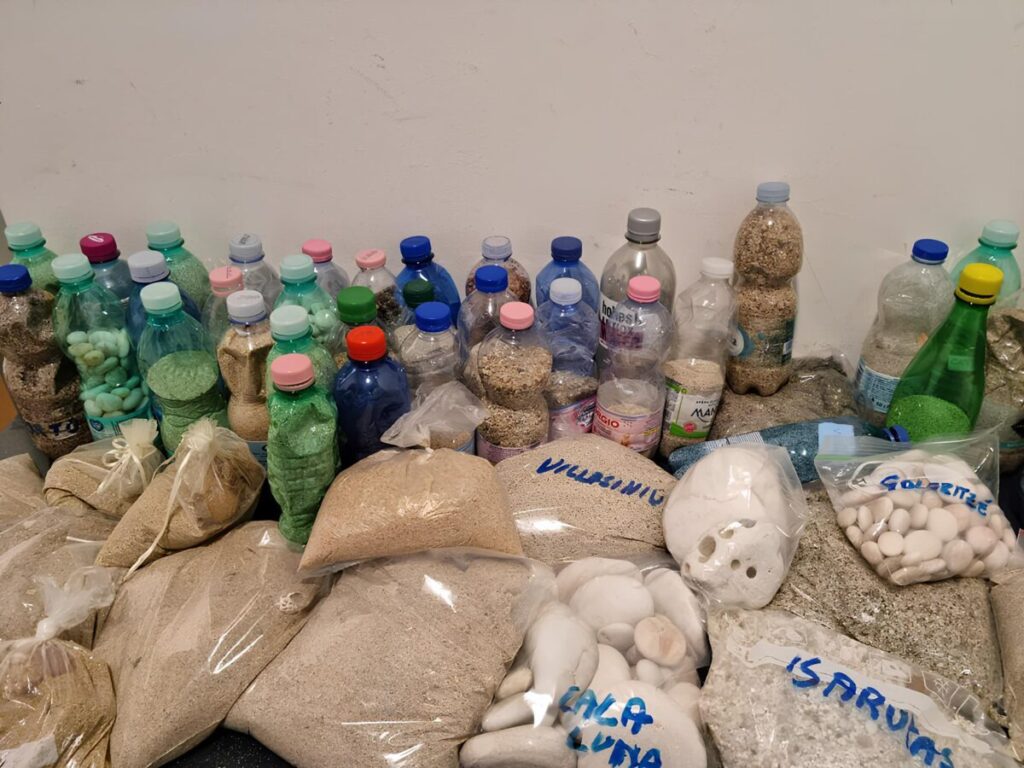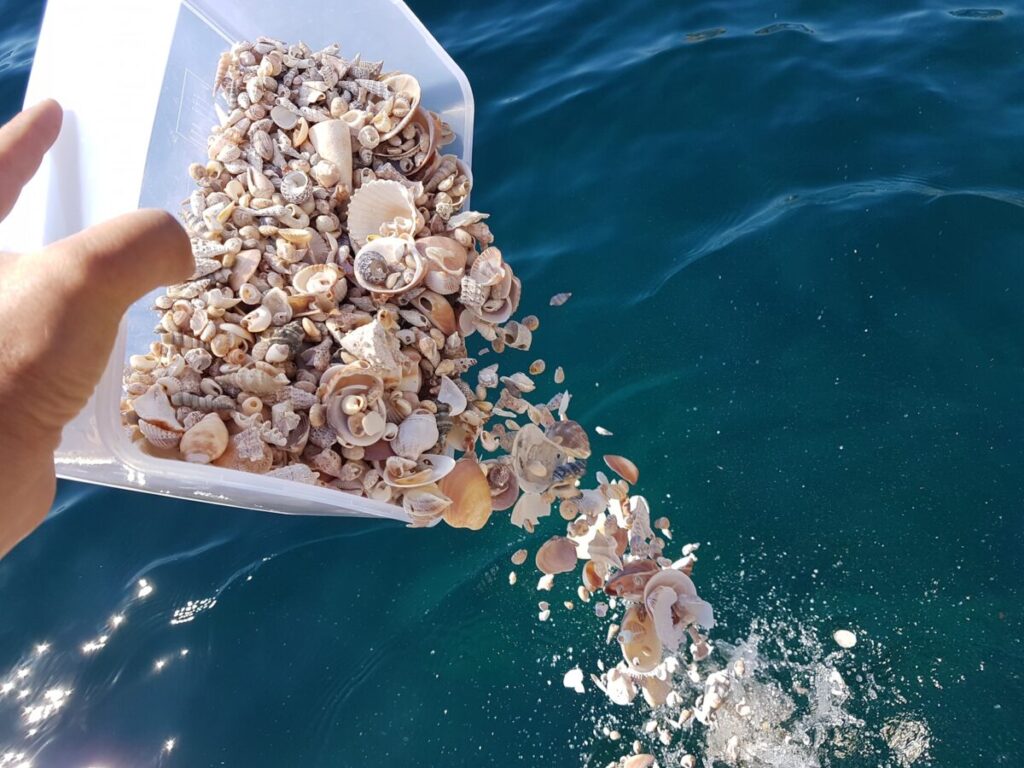Every year, Sardinia undergoes a silent plundering! Over five tons of sand, shells, and pebbles taken by tourists are seized each year by authorities. In addition to harming the beauty of plundered sites, these criminal practices threaten the very survival of Sardinian coasts, already severely impacted by natural erosion and rising sea levels. To combat these thefts, laws have been enacted and awareness campaigns implemented, involving residents and tourists.
The security agents at Elmas Airport in Cagliari are tired of this looting. Tired of bringing back to the Sardinian beaches, after their shift, what has often been taken as a souvenir. Among them, Franco Murru is in charge of the physical inspection of luggage, using X-ray scanners. "When I started this job with my colleagues," says Franco, "we noticed a curious phenomenon: people, at the end of their vacations, were taking bags and bottles full of sand and seashells. So we undertook political actions in favor of a law that would prevent this practice from continuing to impoverish the beaches. To deprive them of their main element: the sand".
This commitment gave rise to the volunteer network "Sardegna rubata e depredata", of which Franco Murru has been the president for almost twenty years.
Coastal erosion a European issue
Eight years ago, these activists launched an online petition titled "Save the beaches of Sardinia, stop the continuous and uncontrolled theft of sand and shells!", signed by over 10,000 people. This significantly contributed to the adoption of a regional law (no. 16 of 2017), which provides for fines ranging from 500 to 3,000 euros for anyone caught taking the precious sand. Before that, those caught with this type of merchandise during airport checks would receive a warning and just end up in an embarrassing situation.

The problem is not only the theft of sand, but its consequences. Coastal erosion is a much broader threat, which does not only concern Sardinia. In fact, the rapid acceleration of this phenomenon causes an estimated loss of about 15 km² of land every year in Europe. According to a report from the European Soil Data Centre, by 2050, an increase in the average erosion rate from 13% to 22.5% is even expected in this region.
The beaches are gradually shrinking due to natural degradation, which is exacerbated by climate change and human activity. Sandro Demuro, a marine geomorphologist and Ph.D. in marine environmental sciences, explains: “Coastal erosion is multifactorial, but the main cause is of anthropic origin, as humans build structures on areas that belong to the sea, on the coasts. For example, beach cleaning mechanisms during the summer alter the natural permeability and shape of the beaches, leaving them unprotected. This operation reflects the primacy of economic interests, as this cleaning is done to maintain an attractive tourist standard. Thus, in September, the first marine storms erode the beaches, and the collection of materials to make souvenirs does not help. The end-of-season balance is therefore extremely negative”.
The beaches lose their ability to regenerate naturally if they are deprived of the materials that ensure their stability. Protecting the sand, therefore, not only preserves the beauty of the island landscape but also helps maintain the ecological balance of the coasts by slowing down the erosion process.
Souvenir or Smuggling: the dual nature of sand theft
In 2002, Eurosion, a European Union program, promoted sustainable coastal management to reduce the effects of coastal erosion. A pan-European effort to find local solutions to European problems.
Sandro Demuro participated in the Eurosion program. "It was a project aimed at studying the phenomenon of coastal erosion on a European scale in order to understand its causes. Despite the differences, we understood that erosive processes are partly due to human action, in addition to nature, he points out. The study allowed us to take stock. We understood from this study that the solutions must be local and aim to protect the natural character of the landscapes."
For many, sand is considered just another travel souvenir among others. "Tourists take it home, where it often ends up forgotten in attics or cellars," explains Murru. For others, it's a real business on the black market: "Some try to sell sand online, as there seem to be collectors all over the world."
However, the phenomenon shows no sign of decreasing. Just in June and July, officials from the Customs Agency of the port of Olbia seized a loot of 120 kilograms of sand, pebbles, and seashells. Lino Cozzuto, regional manager of the Environmental Guard Corps in Villasimius, adds: "The phenomenon has worsened in parallel with the increase in tourist flow. During this period of high turnout on the beaches, there are individuals who take bags of seashells or stones, often for commercial purposes. The recent seizures in Pula involved seashells labeled for sale with the names of the beaches. July and August are the most critical months".
"Last year," reveals Lino Cozzuto, "we seized close to one and a half tons of stolen sand from Villasimius. We brought everything back from Elmas airport to the beach in ten days." Among the most at-risk beaches, Is Arutas is particularly targeted by looters. Famous for its small grains of quartz, "it is part of the marine protected area of the Sinis Peninsula, and many vacationers cannot resist the temptation to take a handful of sand," explains Franco Murru.
Fight Actions in Sardinia
To intensify the fight against these thefts, awareness campaigns, both institutional and non-institutional, are underway, targeting local populations as well as tourists. In Villasimius, for example, "classes are organized in primary schools to teach children how to behave when they go to the sea," explains Lino Cozzuto.
In collaboration with residents and accommodation facilities such as hotels, campgrounds, guesthouses, and vacation homes, "informative brochures are distributed to raise awareness among tourists about the risks and consequences of sand and shell collection," adds Franco Murru.
Despite the persistence of the problem, the campaigns are paying off. An emblematic example is that of a family who recently decided to return the stolen pink sand, taken thirty years ago, from the famous Budelli Beach. Access to this beach was actually banned in 1994 to protect the ecosystem that gives the sand its characteristic pink color from overtourism.

